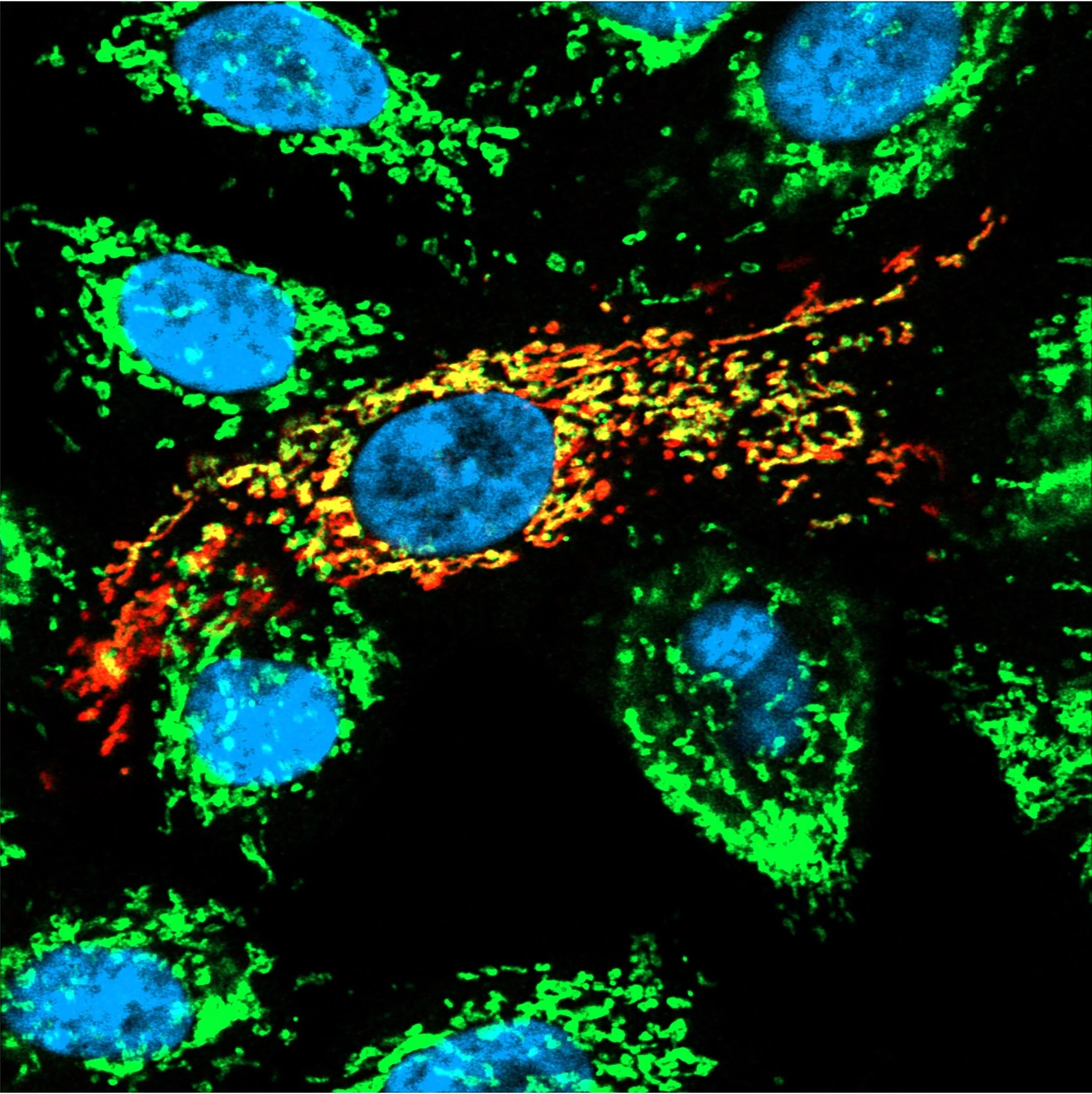
Analysing breastmilk hormones
Human milk is known to contain hormones, cells, antibodies and metabolites which may be passed to infants during breastfeeding. These components could play a role in improving the health and wellbeing of the breastfeeding infant. However, little is known about the types and quantities within human milk.
Mitochondria in human mammary epithelial cells
Mitochondria are crucial for providing energy and making milk components in mammary epithelial cells. These dynamic subcellular structures change morphology in response to stimuli such as hormones. Studying how hormones affect mitochondrial morphology allows to understand how hormones support metabolic adaptations during lactation.
The image on the right was taken using super-resolution confocal microscopy. Mitochondria in human mammary epithelial cells were labelled using two different methods: introduction of a fluorescently labelled mitochondrial protein (red); and antibody staining of a mitochondrial protein (green). Cell nuclei were labelled with a fluorescent dye (blue).

